The terms ‘automation, ‘artificial intelligence’ and ‘machine learning’ are hot topics in a lot of government technology conversations. These terms are often used interchangeably and sometimes incorrectly, which can be confusing when you’re trying to understand these high-tech concepts.
Let’s take a look at what this tech jargon means.
Automation is when technology does a repetitive task without human intervention. Automation doesn’t just pre-date computers—it pre-dates electricity. The practice of using a machine to control something automatically was a focus of dreamers and inventors in ancient cultures including Egypt, Persia, Greece and China. While the concept is old, the word ‘automation’ is newer, coined in the 1940s by car manufacturers as they sought to improve production rates.
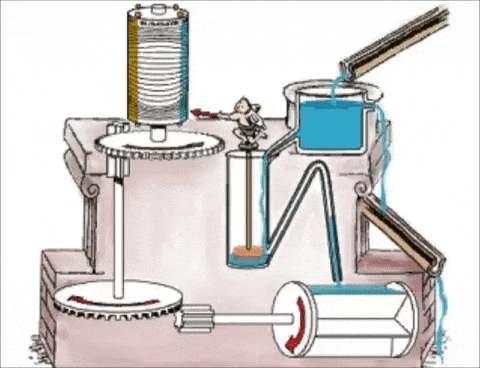
One of the earliest examples of automation: a water clock or clepsydra, invented by Ctesibius.
In the modern era, automation is used to eliminate routine and redundant tasks in business, government and beyond. Today’s workplace is filled with automation, both physical and digital. Automation takes care of mundane chores like keeping the office kitchen’s ice maker full, as well as critical functions like creating server backups on a set schedule.
For automation to work, humans need to decide what task needs to be done and design the technology to do the task. Automation isn’t smart. That’s where artificial intelligence comes in.
Artificial Intelligence, or AI for short, is achieved when a system mimics human thinking, reasoning and decision-making by following logic and rules explicitly programmed by humans. The rise of man-made or god-made creations imbued with intelligence has long been dreamed about or dreaded.

A movie version of Talos, a Greek mythological robot and precursor to AI.
Even though artificial intelligence is a hot topic in gov tech, it’s not a new pursuit. Real-world applications of artificial intelligence have been studied by academia since the 1950s and by the government and military since the 1960s. Muddling things, the definition of artificial intelligence continues to change as new advances are made. Around 1970, computer scientist Larry Tesler summed up this moving target when he said, “Intelligence is whatever machines haven’t done yet.”
Artificial intelligence as practiced today has become part of technologies that people have quickly begun to take for granted. When you have a conversation with Alexa, Siri, Google Assistant or Cortana, you’re interacting with conversational artificial intelligence (of course, if you’ve ever found yourself yelling at Alexa, you know how frustratingly unintelligent some AI can be).
Artificial intelligence may be smart, but by many definitions (as mentioned, there is a lot of disagreement over these definitions), it does what you tell it to and doesn’t learn anything on its own. That’s where machine learning comes in.
Machine learning is when a system is able to use data and experiences to make itself smarter over time. It’s not separate from artificial intelligence. It elevates artificial intelligence from a system that follows instructions to one that actually knows how to learn without needing additional explicit programming by humans.
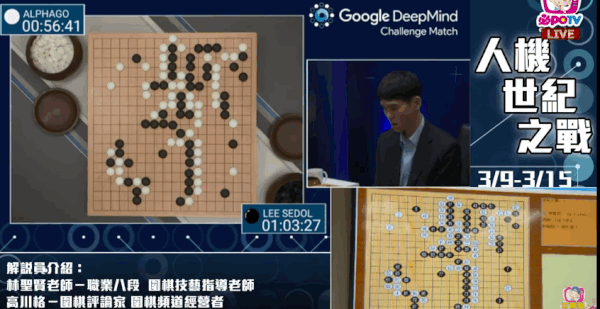
Google DeepMind’s AlphaGo using machine learning to defeat the world’s top human player of the board game “Go.”
Taken to the extreme, machine learning results in those sentient computers that either capture the imagination or make people fear a future robot uprising.
Government adoption of automation, AI and machine learning
Automation, artificial intelligence and machine learning have been rolled out by the public sector in small doses without much resistance, and even with occasional fanfare. In September 2018, senators introduced the Artificial Intelligence in Government Act, which, if passed, would spur the federal government to investigate how it can use artificial intelligence and related technology.
Government human resources has been a natural match for automation and artificial intelligence. NASA uses automation to streamline HR processes. 18F’s Slack bot, named Mrs. Landingham after the beloved character from “The West Wing,” helps new employees get oriented. The Army’s “Sgt. Star” website chatbot does as much work as 55 human recruiters.
Agencies have also started using machine learning. The Department of Energy’s Fermilab has used machine learning to analyze photos of neutrinos. The National Institutes of Health (NIH) funded a brain imaging study of children with autism spectrum disorder that relied on machine learning. DARPA has a program focused on researching machine learning systems.
Whimsically-named helper robots aside, there is anxiety about mixing this tech into government and politics. The use of social media bots to influence elections and manipulate public opinion is just one current example of this kind of tech gone wrong. As government agencies expand their use of automation, artificial intelligence and machine learning, we’ll see more of what these technologies have to offer — for good and for bad.
Further reading
The practices and applications of automation, artificial intelligence and machine learning are complex and ever-evolving. This article just scratches the surface. Pick up one of these books to learn more:
- The Second Machine Age: Work, Progress, and Prosperity in a Time of Brilliant Technologies by Erik Brynjolfsson
- Rise of the Robots: Technology and the Threat of a Jobless Future by Martin Ford
- The Industries of the Future by Alec Ross
- The Fourth Age: Smart Robots, Conscious Computers, and the Future of Humanity by Byron Reese
Lauren Girardin is a marketing and communications consultant, freelance writer, and trainer based in San Francisco. She helps organizations engage their communities and tell their stories. Her website is laurengirardin.com and you can connect with her on Twitter at @girardinl.

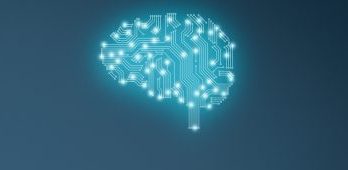
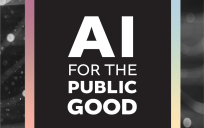
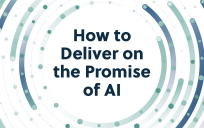

This was so helpful! I think we can all lump these processes into one, catch-all “technology” bucket without realizing the steps involved. The real world examples were fascinating too! That’s my first time hearing about the clepsydra.